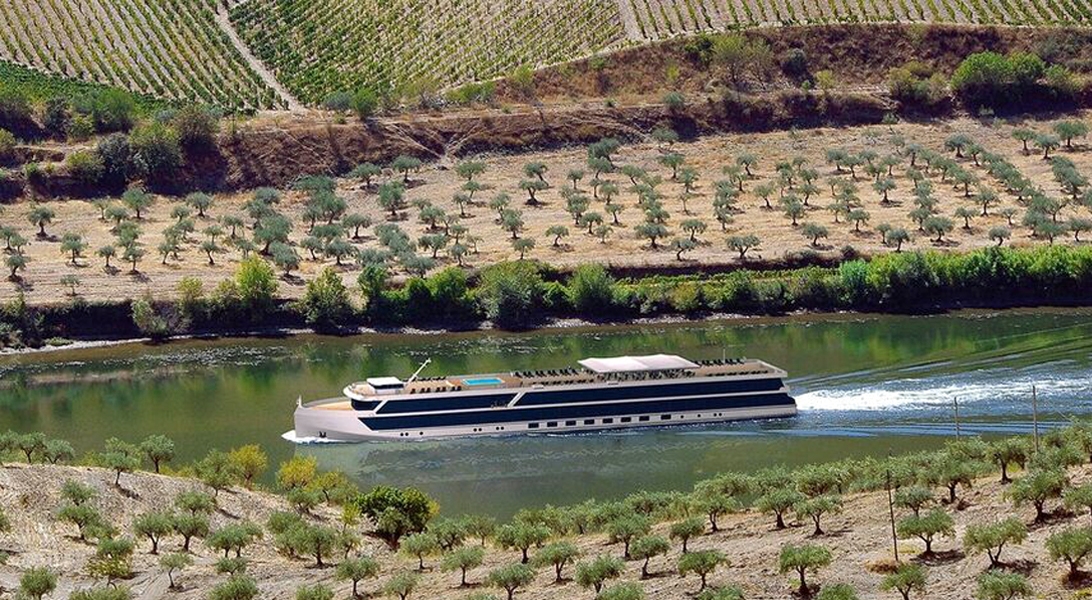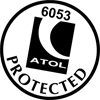| | | | | Arrive | Depart |
| 2nd02 | AprApr | 202626 | Porto, Portugal, embark on the MS Douro Elegance | | |
Lively, commercial Oporto is the second largest city in Portugal after Lisbon. Also called Porto for short, the word easily brings to mind the city's most famous product - port wine. Oporto's strategic location on the north bank of the Douro River has accounted for the town's importance since ancient times. The Romans built a fort here where their trading route crossed the Douro, and the Moors brought their own culture to the area. Oporto profited from provisioning crusaders en route to the Holy Land and enjoyed the riches from Portuguese maritime discoveries during the 15th and 16th centuries. Later, port wine trade with Britain compensated for the loss of the spice trade and the end of gold and gem shipments from Brazil. In the 19th century, the city went through a period of new prosperity with the rise of industries. In its wake followed the building of workers' quarters and opulent residences. Since the declaration of Oporto as a World Heritage Site by UNESCO, the city aims to build up a cultural reference that will provide it with a new image, based on deep historical roots. Among the attractions that make Oporto such an interesting place are its graceful bridges spanning the Douro River, a picturesque riverfront quarter and, most notable, its world-famous port wine lodges. Although Oporto is a bustling centre and home to many different businesses, the source of its greatest fame is the rich, sweet fortified red wine we know as port. Arrival in Porto - Arrive in Porto and, from the moment you board, the welcoming crew are at your service. In no time you’ll be settled into your luxurious, thoughtfully furnished accommodation and familiarising yourself with all the first-class aspects of this floating boutique hotel. |
| 3rd03 | AprApr | 202626 | Régua, Portugal | | |
| Pinhão - One of the benefits of life aboard a river cruise is the sheer sense of relaxation it brings; our elegant ship slips its moorings during breakfast and we enjoy most of the day sailing. There is plenty of time for a spot of pampering in the on-board spa, or simply watch the seamless changing of the riverbank scenery passing by from the comfort of a cosy seat in the lounge. We’re in port wine territory, where the lush hillsides have largely given way to a patterned landscape of terraced vineyards. Inland from the Atlantic, the climate has changed, too; it’s noticeably warmer and drier, while the area has a Mediterranean appearance with orangey, earthy colours replacing verdant greens. Later we arrive back in the pretty little town of Pinhao. This afternoon we enjoy a visit to a local historic quinta to learn all about the stages of wine production, from the planting of the vines, harvesting, the wine-making process and finally tasting and labelling. No visit would be complete without sampling some of their excellent produce of course, so we enjoy a tasting before returning to the ship. We are moored overnight in Pinhao. |
| 4th04 | AprApr | 202626 | Cruising | | |
| 5th05 | AprApr | 202626 | Salamanca, Spain | | |
| Salamanca - Hopping over the border to Spain, we'll visit historic Salamanca, regarded by many Spaniards as one of the best gastronomic cities in the country (and we have to agree). Founded by the Romans, who erected its 389-yard-long bridge, Salamanca is mostly built from local sandstone that emanates a gorgeous rose-coloured glow in the sunlight. Perched on a hill on a bend in the serene River Tormes, the city is a picture of tranquillity, but its history is turbulent. It’s been successively fought over by Hannibal, the Moors, then the Duke of Wellington and Napoleon and their influence can still be felt in the local cuisine. Salamanca is dominated by its two cathedrals and its university. Founded in 1218, the university is the oldest in Spain and was one of the civilised world’s most important seats of study for over 400 years. The Spanish Inquisition’s records are still kept here, and as early as the 16th century it boasted some 12,000 students. Seeing its immaculately preserved lecture halls with their vaulted ceilings, it’s easy to imagine Christopher Columbus addressing the learned men of the day or legal experts constructing the international laws that originate here. On our visit to Salamanca, there's plenty of time to stop to admire the ornate interiors of its cathedrals – the more recent dates from the 16th century – and wander its tiny streets, medieval squares, traditional shops, gardens and marketplaces. The main square, the Plaza Mayor, is also a must-see. It was built in the 18th century in Spanish Baroque style with colonnaded walkways all around at ground level, ideal for finding a shaded spot to sit and watch the locals pass by. And nearby, we’ll shop like the locals do in the city’s marketplace. This small (but perfectly formed) building next to the main square is a bustling hub of locals who come here to buy fresh produce - what better place to find the finest Iberian ham and, of course, sample it for yourself. Our included lunch today also is an opportunity to taste some of Spain's most notable tapas dishes. Back in Portugal, the chef will present a mouthwatering array of traditional Portuguese dishes for tonight’s on-board dinner. |
| 6th06 | AprApr | 202626 | Régua, Portugal | | |
| Mateus Palace Gardens - As dawn breaks over Porto the adventure begins as our elegant vessel commences her stately passage upstream. Your first delicious breakfast is served by the attentive crew and whilst you linger over another coffee, you can really start to unwind as we leave the city skyline far behind. Head up on deck to appreciate the changing landscape in all its splendour as the river weaves its way between the lush hillsides; from the first morning on board, it’s very apparent that the Douro is one of Europe’s most photogenic river valleys and the topography has prevented the building of extensive riverside roads. After another superb lunch on board, we cruise into the small town of Peso da Régua, from where we visit the grounds of the splendid Mateus Palace and its sublime palace interiors. Anyone familiar with Mateus Rosé and its characteristic ‘squashed’ bottle will recognise the palace from the label. Whatever your opinion of the wine, it is an impressive 18th-century Baroque edifice, mirrored in its stunning pond, surrounded by landscaped French gardens. This evening, we take the short drive to the 126-acre Quinta da Pacheca for dinner. Enjoying dramatic views over the Douro, it dates back to the 18th-century and is simply one of the most beautiful and distinguished properties in the region. It is also notable as being the first quinta – in 1738 – to bottle wine under the name of its owner, the aristocrat Mariana Pacheco Pereira. You have time to wander through part of the estate before sampling the wines with dinner. We are moored in Régua overnight. |
| 7th07 | AprApr | 202626 | Lamego, Portugal | | |
| Lamego - Enjoy breakfast on board before we take a short drive to historic Lamego. Home of Portugal’s sparkling wine, Raposeira, it was one of the first places to be reclaimed from the Moors in the 12th century. Situated at the top of a beautifully tiled baroque staircase - and overlooking the town - is the Sanctuary of Our Lady of Remedies church. If you’re up for a challenge, it’s worth climbing the 686 steps to the top of the staircase for stunning views of the city - don't worry, you can stop to admire the fountains, mosaics and hedges along the way. We can't visit Lamego without trying another of the area's many delicacies. You can sample traditional bôla - a mouthwatering savoury bread which hides all sorts of delicious meats and cheeses to create the ultimate comfort food (it's no wonder it's one of the most popular local snacks) - accompanied by other delicious local produce. And you’ll have the chance to try the region’s sparkling wine for yourself. By the time we return to our ship, our chef and his team will be adding the finishing touches to another delicious lunch, ready to be served as we leave for our next stop. Afterwards, there’s the perfect opportunity to take to the sun deck to enjoy the kaleidoscope of Douro views – or perhaps a spot of reading in the lounge over a cup of tea. This evening is the Chef's Dinner, a truly memorable experience featuring exquisite regional specialities, followed by a colourful performance of traditional Portuguese folk music. |
| 8th08 | AprApr | 202626 | Cruising | | |
| 9th09 | AprApr | 202626 | Porto, Portugal, disembark the MS Douro Elegance | | |
Lively, commercial Oporto is the second largest city in Portugal after Lisbon. Also called Porto for short, the word easily brings to mind the city's most famous product - port wine. Oporto's strategic location on the north bank of the Douro River has accounted for the town's importance since ancient times. The Romans built a fort here where their trading route crossed the Douro, and the Moors brought their own culture to the area. Oporto profited from provisioning crusaders en route to the Holy Land and enjoyed the riches from Portuguese maritime discoveries during the 15th and 16th centuries. Later, port wine trade with Britain compensated for the loss of the spice trade and the end of gold and gem shipments from Brazil. In the 19th century, the city went through a period of new prosperity with the rise of industries. In its wake followed the building of workers' quarters and opulent residences. Since the declaration of Oporto as a World Heritage Site by UNESCO, the city aims to build up a cultural reference that will provide it with a new image, based on deep historical roots. Among the attractions that make Oporto such an interesting place are its graceful bridges spanning the Douro River, a picturesque riverfront quarter and, most notable, its world-famous port wine lodges. Although Oporto is a bustling centre and home to many different businesses, the source of its greatest fame is the rich, sweet fortified red wine we know as port. Return home |

